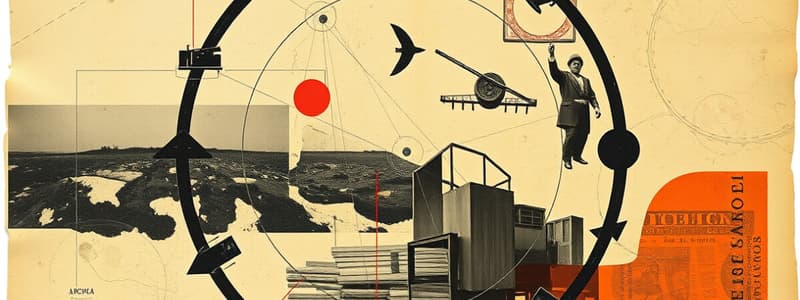Podcast
Questions and Answers
What is microeconomics primarily concerned with?
What is microeconomics primarily concerned with?
- The behavior of households and firms (correct)
- Large scale economic policies
- National economic growth and unemployment
- Government regulation and taxes
Which statement accurately describes the circular flow diagram?
Which statement accurately describes the circular flow diagram?
- It includes only the flow of goods and services.
- It shows the income received by households and payments made by firms. (correct)
- It only includes the government sector.
- It represents transactions solely within foreign markets.
In the circular flow diagram, what do firms primarily do?
In the circular flow diagram, what do firms primarily do?
- Consume goods and services
- Produce goods and services (correct)
- Own factors of production
- Pay taxes to the government
Which of the following is NOT a component of macroeconomics?
Which of the following is NOT a component of macroeconomics?
What does the lower loop of the circular flow diagram represent?
What does the lower loop of the circular flow diagram represent?
In the circular flow model, the statement 'Everyone’s expenditure is someone else’s receipt' suggests what concept?
In the circular flow model, the statement 'Everyone’s expenditure is someone else’s receipt' suggests what concept?
Transfer payments in the circular flow model typically refer to which of the following?
Transfer payments in the circular flow model typically refer to which of the following?
Which of the following does NOT represent a flow in the circular flow diagram?
Which of the following does NOT represent a flow in the circular flow diagram?
What are transfer payments?
What are transfer payments?
Which of the following is an example of an export?
Which of the following is an example of an export?
What role do households play in the money market?
What role do households play in the money market?
Which statement accurately describes the labor market?
Which statement accurately describes the labor market?
What is the relationship between dividends and shares of stock?
What is the relationship between dividends and shares of stock?
When the government issues Treasury bonds, what is it doing?
When the government issues Treasury bonds, what is it doing?
What is a characteristic of corporate bonds?
What is a characteristic of corporate bonds?
How are imports defined in an economic context?
How are imports defined in an economic context?
Flashcards are hidden until you start studying
Study Notes
Microeconomics vs. Macroeconomics
- Microeconomics focuses on small economic units like individuals, firms, and industries, examining aspects such as competitive markets and personal decision-making.
- Macroeconomics studies the economy as a whole, analyzing national economic growth, government spending, inflation, and unemployment.
Circular Flow Diagram
- Represents income and payments circulating between economic sectors, specifically households and firms.
- Assumes the economy consists solely of households and firms.
- Households own production factors and consume goods and services; firms hire these factors to produce.
Components of the Circular Flow
- Upper Loop: Represents transactions in the goods and services market, reflecting revenue from sales.
- Lower Loop: Represents transactions in factor markets, showing payments made for labor, land, and capital.
- GDP is represented in both market transactions: revenue (firms) and spending (households).
Government and Foreign Agents
- Factors in government spending and revenues, such as purchases of goods and services, factor payments, and taxes.
- Transfer payments are government payments where no goods or services are exchanged (e.g., unemployment benefits, scholarships).
- Foreign sector interactions include exports (domestic sales to other countries) and imports (goods bought from abroad).
Three Market Arenas
- Economic interactions occur in three key arenas:
- Goods-and-Services Market: Households and governments demand products from firms.
- Labor Market: Firms and governments demand labor from households.
- Money (Financial) Market: Households invest in stocks and bonds, providing funds to firms and borrowing from financial institutions.
Financial Instruments
- Treasury bonds, notes, and bills: Promissory notes issued by the federal government for borrowing.
- Corporate bonds: Issued by corporations when they seek to borrow money.
- Shares of stock grant ownership in a firm and rights to its profits, referred to as dividends.
Studying That Suits You
Use AI to generate personalized quizzes and flashcards to suit your learning preferences.




